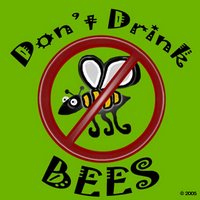MACO LIGHT - RADIO PLAY(adapted from Richard Walser's
North Carolina Legends. Select stories can be found at
http://www.secretary.state.nc.us/kidspg/legends.htm.)
Narrator 1: On a night in 1867, at the small Brunswick County station of Maco fifteen miles west of Wilmington, a slow freight train was puffing down the track.
(puffing noise of train)Narrator 2: In the caboose was Joe Baldwin, the flagman. A jerking noise startled him
(banging noise), and he was aware that his caboose had become uncoupled from the rest of the train, which went heedlessly on its way.
Narrator 3: As the caboose slackened speed
(puffing noise of train slows), Joe looked up and saw the beaming light of a fast passenger train bearing down upon him.
(sound of a second train) Grabbing his lantern, he waved it frantically to warn the oncoming engineer of the imminent danger.
(metal creaking)Joe: (frantically) Stop! Stop! Can't you see my lantern? Stop!
Narrator 4: It was too late.
Narrator 5: At a trestle over the swamp, the passenger train plowed into the caboose.
(crashing noises) Joe was decapitated. His head flew into the swamp on one side of the track
(thump). His lantern fell on the other side.
(crash of metal)Narrator 6: It was days before the destruction caused by the wreck was cleared away. And when Joe's head could not be found, his body was buried without it.
Minister: (solemnly) "Ashes to Ashes, Dust to Dust."
Woman: (whispering) You say they never found his head?
Narrator 7: Thereafter on misty nights, Joe's headless ghost appeared at Maco
(ghostly wailing) (creak of a lantern), a lantern in its hand.
Narrator 8: Anyone standing at the trestle
(footsteps) first saw an indistinct flicker moving up and down, back and forth.
John: You see it? See it there?
Jennifer: Where?
(pause) Oh! Over there? I see it!
Narrator 9: Then the beam swiftly moved forward, growing brighter and brighter as it neared the trestle.
Jennifer: (frightened) It looks like it's coming closer! Let's go!
John: Don't worry. It'll stop before it gets to us.
Jennifer: It better!
Narrator: About fifty feet away, it burst into a brilliant, burning radiance. After that, it dimmed, backed away down the track, and disappeared.
(cry of a ghost)Jennifer: (gasps)John: See? Show's over. Let's go.
(footsteps walking away)Jennifer: (whispers) What was it?
Narrator 11: It was Joe with his lantern, of course. But what was he doing? Was he looking for his head? Or was he trying to signal an approaching train?
Narrator 12: In 1889 President Grover Cleveland, on a political campaign, saw the mysterious light, as have hundreds of people throughout the years.
Cleveland: (giving a speech) I want to appeal to the American people to do the right thing and support me as I -
(ghost howl) (whispers) What- what was that?
Narrator 13: But in 1977 when the railroad tracks were removed
(metal noise) and the swamp reclaimed his haunting grounds
(buzzing of insects, frog noises), Joe seems to have lost interest in Maco. At least, he has not been seen there lately.
(ghost howl)Notes:- I used 13 narrators in this story, because I had a large class, and I wanted to make sure as many students as possible got a chance to participate.
- I made sure some of the parts were just one line, so my reluctant readers were more willing to participate. (It worked!)
- Students enjoy making the sound effects which makes reading this story even more fun.
- Many stories can be adapted in this way.


